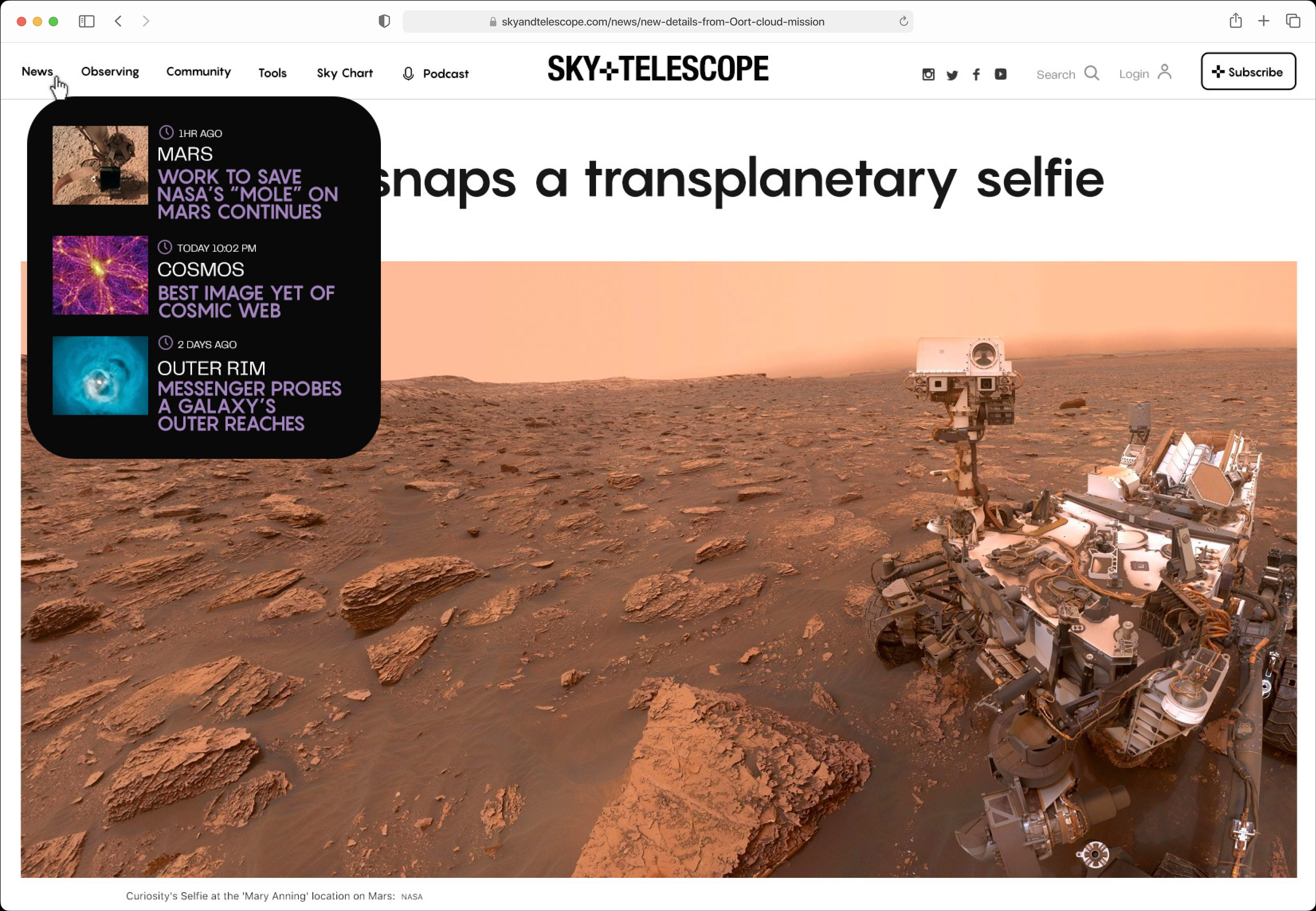
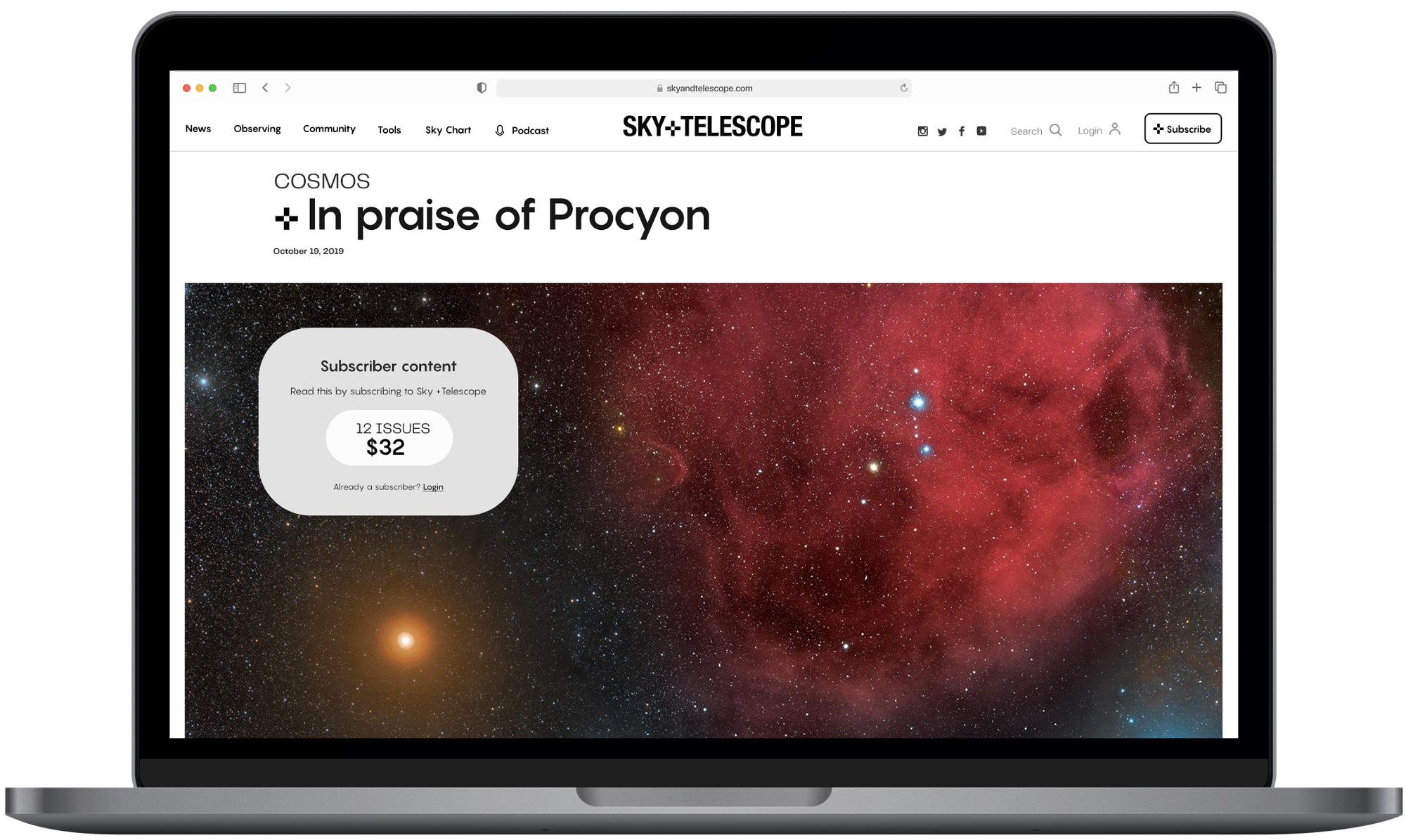
A new symbol (![]() ) replaces the ampersand joining the words sky and telescope in the masthead. It can be read as three: a plus sign, stylized star, and telescopic reticle.
) replaces the ampersand joining the words sky and telescope in the masthead. It can be read as three: a plus sign, stylized star, and telescopic reticle.
The new type system pairs Telegraf and Pangram, both evocative of the mid-century space age.
 ) replaces the ampersand joining the words sky and telescope in the masthead. It can be read as three: a plus sign, stylized star, and telescopic reticle.
) replaces the ampersand joining the words sky and telescope in the masthead. It can be read as three: a plus sign, stylized star, and telescopic reticle. The new type system pairs Telegraf and Pangram, both evocative of the mid-century space age.
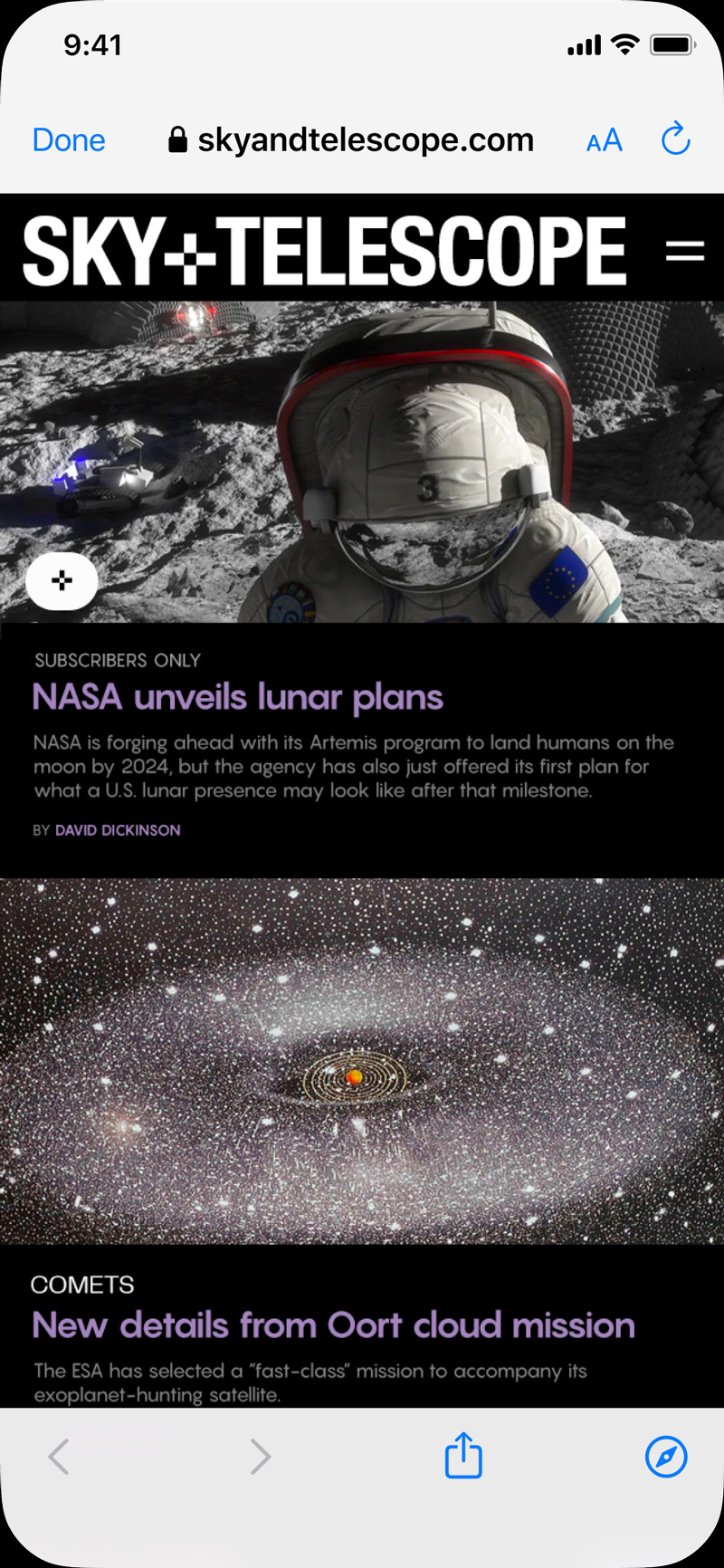

Star amateurs: Sky + Telescope Magazine website redesign + visual update
Identity update and website redesign. Research, creative direction, design. Made at Happy Cog, July 2019.
Sky + Telescope is an 80-year-old astronomy magazine for nonprofessional astronomers. Rather than nonprofessional I should say amateur, but amateur has been corrupted to mean dabbler, “a person who follows a pursuit without attaining proficiency or professional status,” per Merriam-Webster’s. Amateur astronomers are even the target of the example sentence in Apple’s built-in dictionary:
dabbler
noun
I'm no expert astronomer, just a dabbler: AMATEUR, dilettante, layman, layperson; trifler, nonprofessional, nonspecialist. ANTONYMS professional.
![]()
Comet Hale-Bopp, 1997
But originally amateur had traveled to us from the same French (“lover”), originally through the Latin amare, “to love,” making an amateur “one who cultivates and participates (in something) but does not pursue it professionally or with an eye to gain.”
If that definition sounds a little bit Zen it’s because it echoes the idea of the Zen mind, or “beginner’s mind,” called shoshin (初心), through which a person practices mindful forgetting. The aim of shoshin isn’t to reject knowledge and remain in some blissful state of ignorance, but to avoid desensitizing the mind (or rather, the heart) to the familiar; summed up by Shunryū Suzuki that, “In the beginner’s mind there are many possibilities; in the expert’s there are few.”
The expert’s mind, thinking goes, is bounded, restrained, burdened with dogma, ideology, and a lack of intellectual humility, i.e., for all the information packed in there telling them they should know better, they paradoxically do less and less with more. It’s not only a closed mind but a mind closing in on itself.
The beginner’s mind on the other hand is the open mind: ready, compassionate, expanding, full of love. This is why amateurs (which by this definition doesn’t exclude sensitive professionals, but may exclude many nonprofessionals) get the jump on discovery: because no matter how many times they train their eye over the same well-worn patch of sky, they never lose an essential, life-giving sensitivity to awe.
![]()
![]() William Herschel has seen some things.
William Herschel has seen some things.
William Herschel discovered Uranus, first called Georgium Sidus, or “Georgian Star,” while scanning the night sky with a telescope he built himself. He was a violin virtuoso whose interest in astronomy had to that point been self-guided by what books were available.
More recently Alan Hale discovered Hale-Bopp from a telescope in his driveway. Thomas Bopp, who observed the comet that same night, didn’t even own a telescope, but noticed it while looking through a borrowed eyepiece.
‘It’s like winning the cosmic lottery’: An amateur astronomer caught the first-ever photos of a star exploding
The contradiction inherent to shoshin, and all Zen teaching, is that pursuing it for the promise of personal gain actually prevents you from achieving it. It’s like one of those dollar-bill-on-a-string gags. Every time you think you have it, some invisible hand yanks it away.
But amateur astronomers, true lovers of wonder and awe, have no designs on planet Earth. That dollar doesn’t interest them. Eyes peeled to the sky, they probably never notice it at all.
dabbler
noun
I'm no expert astronomer, just a dabbler: AMATEUR, dilettante, layman, layperson; trifler, nonprofessional, nonspecialist. ANTONYMS professional.
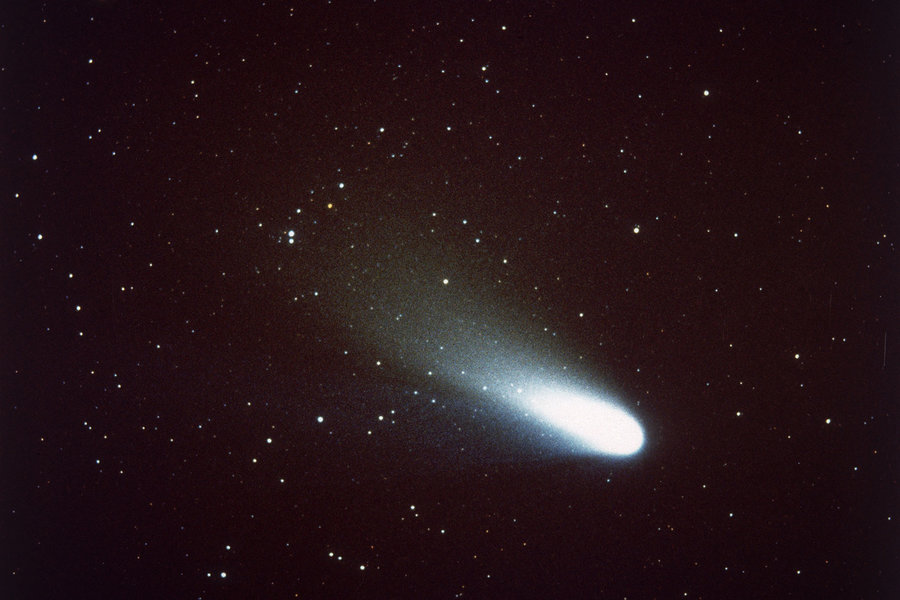
Comet Hale-Bopp, 1997
But originally amateur had traveled to us from the same French (“lover”), originally through the Latin amare, “to love,” making an amateur “one who cultivates and participates (in something) but does not pursue it professionally or with an eye to gain.”
If that definition sounds a little bit Zen it’s because it echoes the idea of the Zen mind, or “beginner’s mind,” called shoshin (初心), through which a person practices mindful forgetting. The aim of shoshin isn’t to reject knowledge and remain in some blissful state of ignorance, but to avoid desensitizing the mind (or rather, the heart) to the familiar; summed up by Shunryū Suzuki that, “In the beginner’s mind there are many possibilities; in the expert’s there are few.”
The expert’s mind, thinking goes, is bounded, restrained, burdened with dogma, ideology, and a lack of intellectual humility, i.e., for all the information packed in there telling them they should know better, they paradoxically do less and less with more. It’s not only a closed mind but a mind closing in on itself.
The beginner’s mind on the other hand is the open mind: ready, compassionate, expanding, full of love. This is why amateurs (which by this definition doesn’t exclude sensitive professionals, but may exclude many nonprofessionals) get the jump on discovery: because no matter how many times they train their eye over the same well-worn patch of sky, they never lose an essential, life-giving sensitivity to awe.

 William Herschel has seen some things.
William Herschel has seen some things. William Herschel discovered Uranus, first called Georgium Sidus, or “Georgian Star,” while scanning the night sky with a telescope he built himself. He was a violin virtuoso whose interest in astronomy had to that point been self-guided by what books were available.
More recently Alan Hale discovered Hale-Bopp from a telescope in his driveway. Thomas Bopp, who observed the comet that same night, didn’t even own a telescope, but noticed it while looking through a borrowed eyepiece.
‘It’s like winning the cosmic lottery’: An amateur astronomer caught the first-ever photos of a star exploding
Headline from Business Insider, 2018. The pullquote is from an expert consulted for the story. Note the framing metaphor is a financial windfall.
The contradiction inherent to shoshin, and all Zen teaching, is that pursuing it for the promise of personal gain actually prevents you from achieving it. It’s like one of those dollar-bill-on-a-string gags. Every time you think you have it, some invisible hand yanks it away.
But amateur astronomers, true lovers of wonder and awe, have no designs on planet Earth. That dollar doesn’t interest them. Eyes peeled to the sky, they probably never notice it at all.

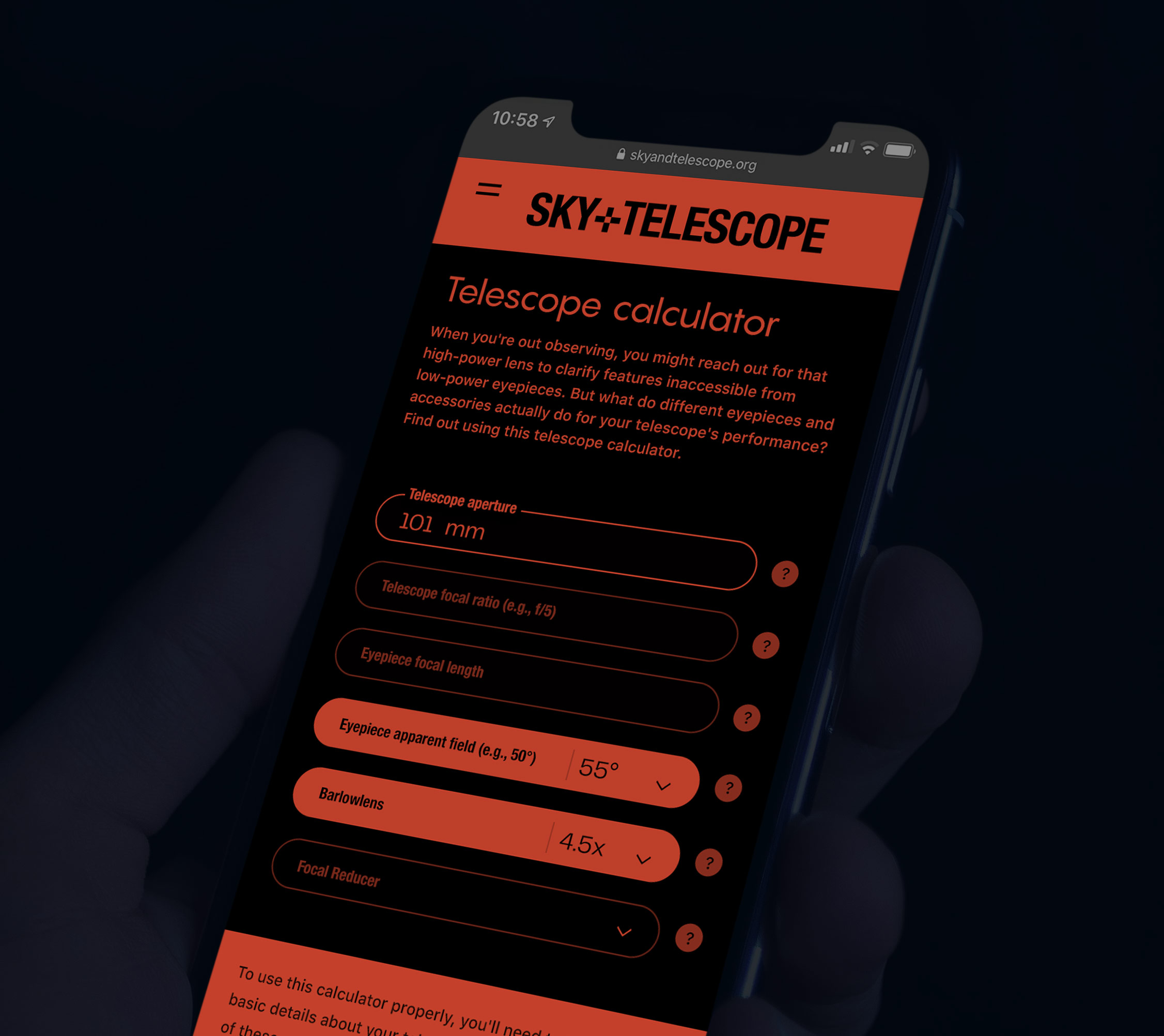
Proposed red-light mode for use during field observation. Red light doesn’t interfere with the eyes’ light-sensitive cones, so there’s no period of recovery when moving from screen to sky.